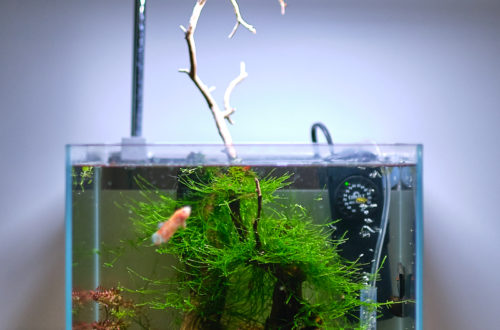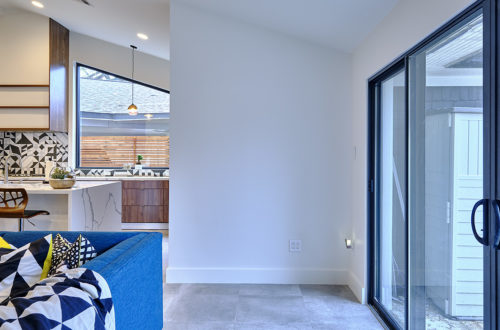
The Tampa Bay Saltwater Experience
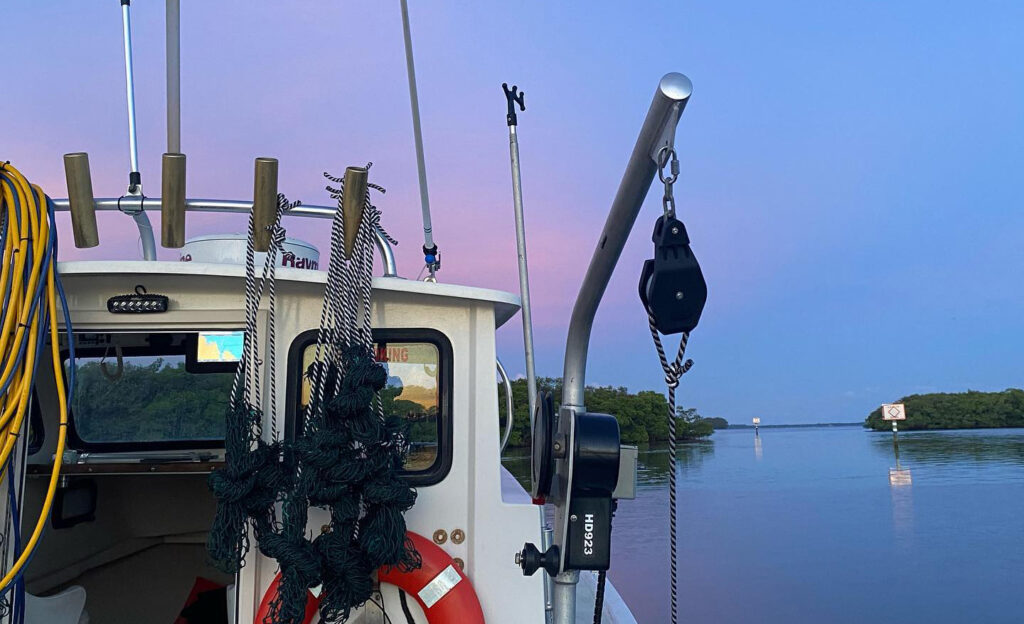
I’ve been a Tampa Bay Saltwater customer for more than a decade now and have started at least half a dozen saltwater reef aquariums using their rock, sand, and clean-up crew. TBS is an amazing asset and resource for hobbyists in the USA. In this article, I hope to offer some insight into their product/service, take you on a little journey, and show you what it’s like to purchase “The Package”.
Who is Tampa Bay Saltwater?
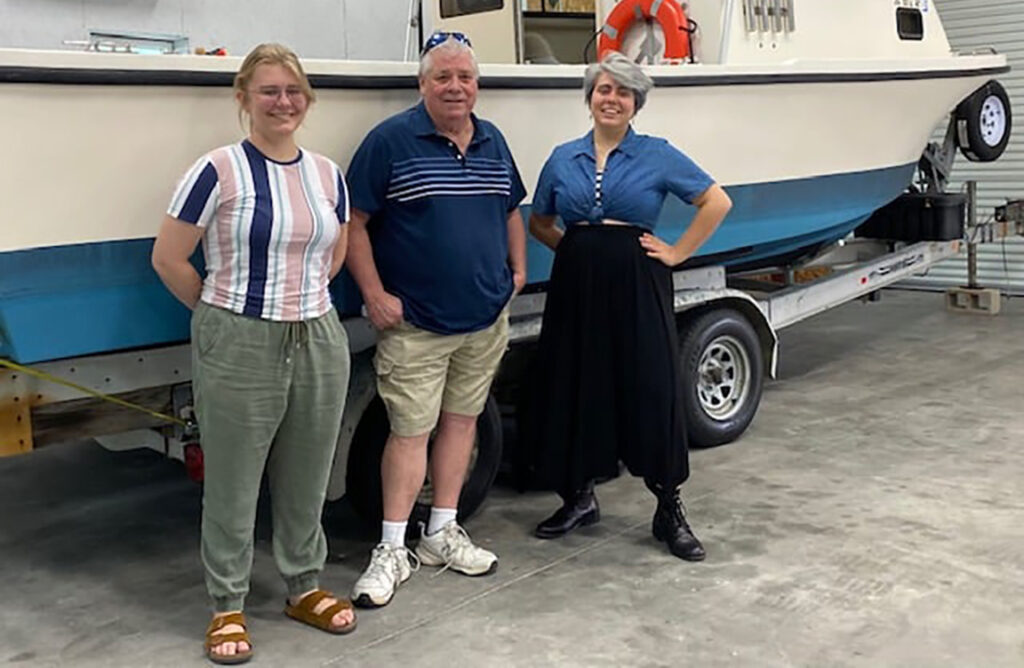
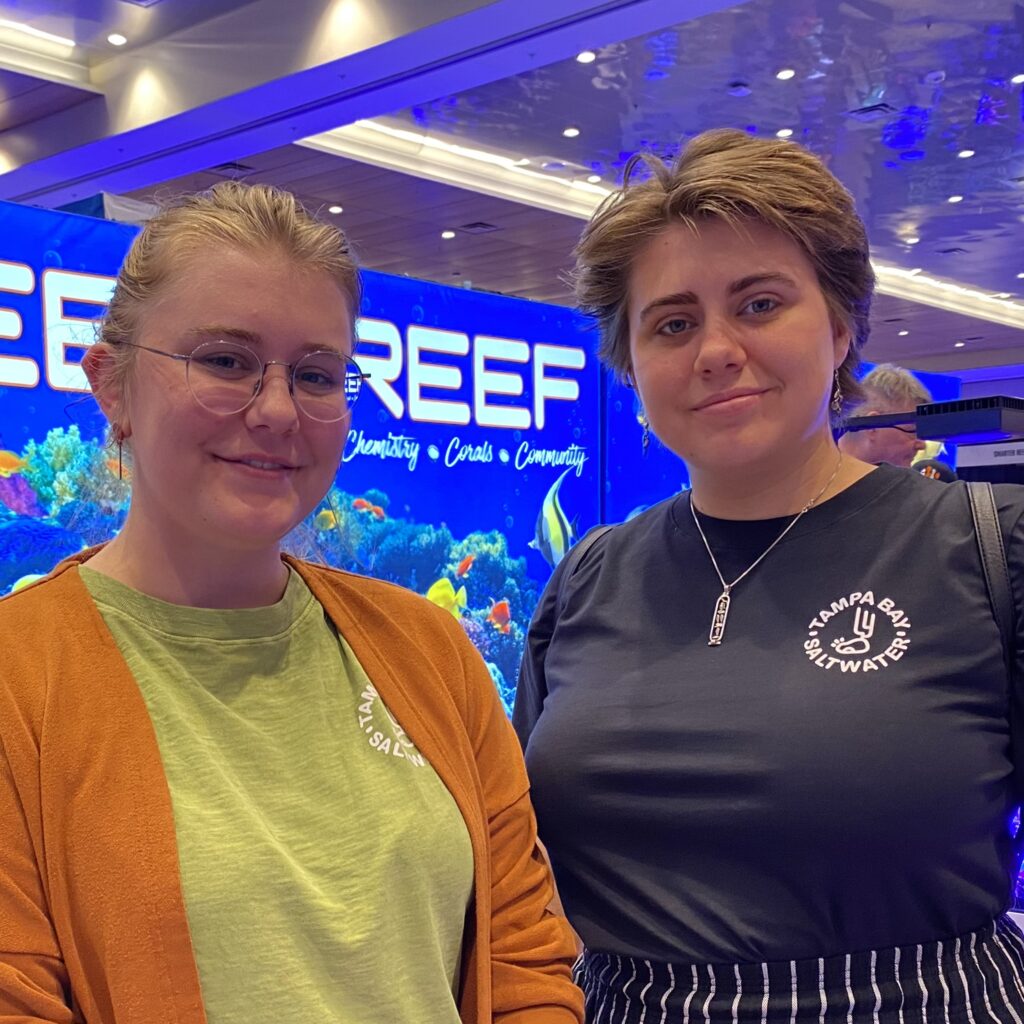
Tampa Bay Saltwater (TBS) is a small family-run outfit based in Tampa, Florida that was started nearly 40 years ago by Richard Londeree, who recently handed the reigns over to two young Florida-native siblings, Jocelyn and Madelyn Lyon. They specialize in what is essentially eco-friendly, sustainable, aquacultured “Rock Farming” for the saltwater aquarium industry. Dry rock is placed far off the coast of Tampa Bay, actually closer to Tarpon Springs (Sponge capital of the world!), in the Gulf of Mexico in a 5-acre area leased from the state of Florida. These seemingly magical waters are able to convert dry pieces of rock into stunning displays of biodiversity in a matter of just a few short months.
The rock is harvested by the duo and shipped to customers via same-day air freight, submerged in water, ensuring the highest amount of ocean life is preserved. Along with real ocean sand acquired from the same site, this allows the customer to start a new saltwater reef aquarium with virtually no cycle. A fully functional saltwater reef aquarium capable of supporting fish and coral within a couple of short weeks rather than several months!
What sets TBS apart from most other “live rock” is that NO CURING is needed. Their collection and shipping processes are designed to provide the freshest live rock available. You’ve heard the term, “Farm to Table”? This is the aquarium equivalent… “Farm to Tank”. When your rock arrives, it is immediately placed in your aquarium, ready to do its bio-filtering job.
The same goes for the sand. The sand is collected far offshore, free of pollutants but chock full of all kinds of organisms and bio-diversity that will be an essential part of the denitrification process and overall health and stability of your tank. The rock is not the only hero in this story!
For more information and details about TBS, their history, and their products, head over to their website.
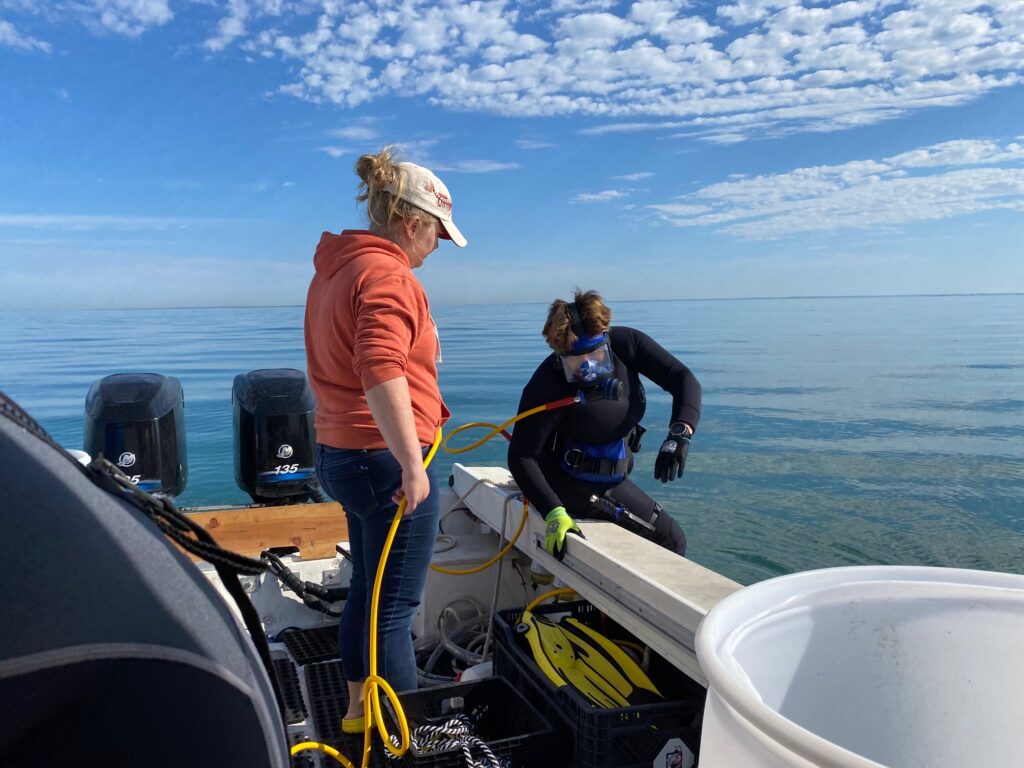
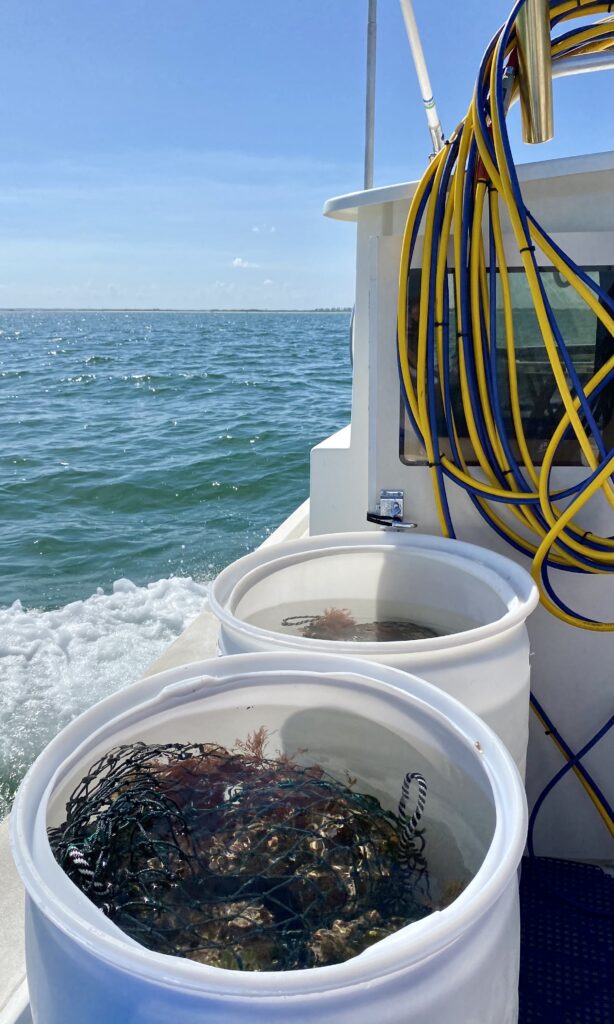
Let’s get rocked!
So what is it like to start a saltwater reef aquarium with Tampa Bay Saltwater? That’s exactly what we are going to talk about today! This is an in-depth look at the entire process from an empty tank to a fully functional reef tank capable of supporting life.
“The Package”
“The Package” is what TBS calls their all-inclusive new-tank startup kit. They have a calculator on their website. You input the size of your aquarium (just the main display) in gallons and the calculator adds up all the rock, sand, and clean-up crew that is recommended for that size tank. It’s based on a simple formula of 2 lb per gallon of rock and 1 lb per gallon of sand. For example; a 50 gallon-sized tank would require 100 lb of rock and 50 lb of sand.
The Package is typically shipped in two parts. Part I is all the sand and the first half of the rock, which consists of their base rock. After receiving Part I and monitoring tank parameters for several days and getting through any ammonia spike you may have, you can schedule shipment of Part II. Part II is the rest of the rock (which will be their premium rock), and all your clean-up crew.
Once Part II is in the tank, you can monitor tank parameters, and you will most likely be ready to start slowly adding fish and coral within days.
ORDERING
Step 1 in the process is to place your order! You will go to The Package page on the TBS website. Input your display tank size. All individual items will be calculated for you.
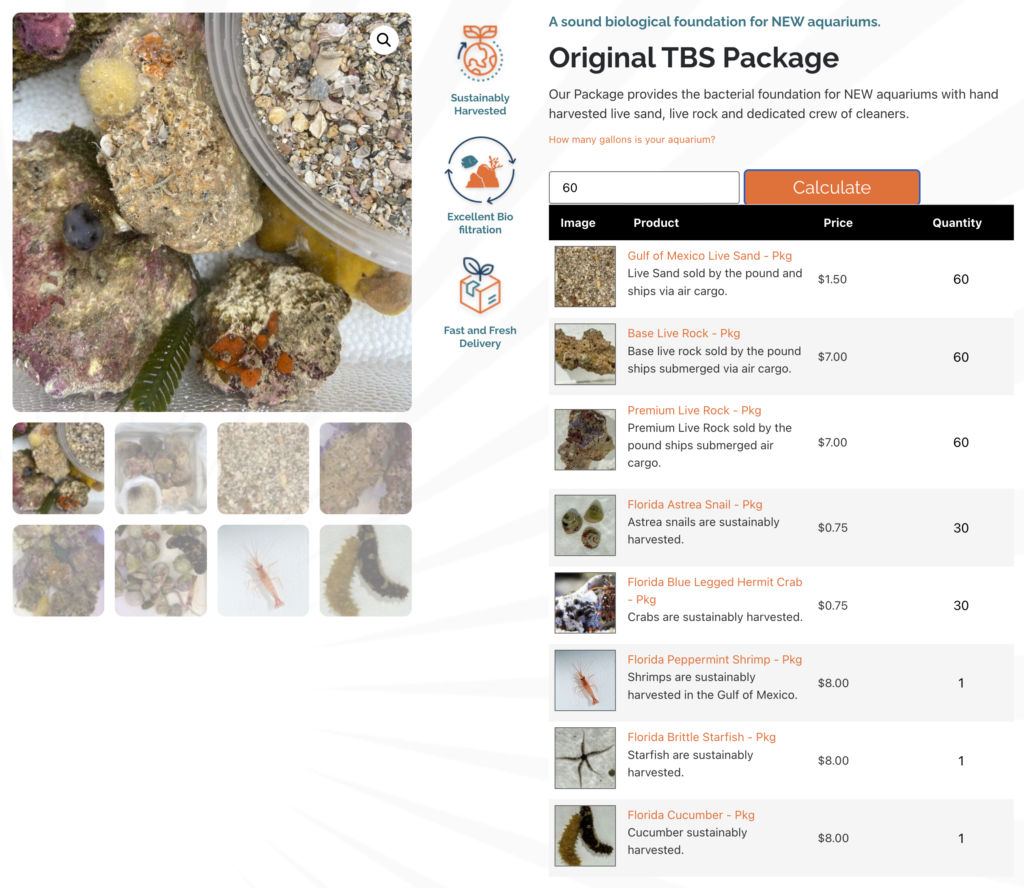
SCHEDULING
The TBS team will be in contact after your order is placed to schedule a time for shipping. Harvesting is weather dependent (at the time of this writing they are two weeks behind due to TWO hurricanes), but they make every attempt to dive and collect weekly and ship weekly. Shipment will be scheduled as soon as is possible. Now is the time to discuss any special requests or concerns with the team. You will want to make sure your tank is fully ready to support your incoming shipment. I like to have mine fully set up, filled with saltwater, and running BEFORE placing my order. I want to catch any issues that may need to be rectified now while they’re easy to fix. You will also want to make sure you have freshly mixed saltwater on hand in case any water changes are needed after receiving Part I.
SHIPPING & PICKING UP “PART I”
The day has come! Are you ready? I hope so!
Since you placed your order, M&J at TBS have been very busy! When they dive for your rock, sand, and critters, these items are brought up in nets and containers and immediately placed into vats of seawater on the boat. Everything stays submerged. Everything is transported back to the warehouse and placed in the holding system. On the day of shipping, your order is removed from the holding tanks and placed into thick plastic bags full of water and oxygenated. The bags go into styrofoam-lined boxes. This all ensures that there are no drastic changes in temp, and everything arrives undamaged and in its freshest state possible with the least amount of die-off.
PICK-UP TIME!
On the day you are to receive your shipment, you will probably wake up to an email from the elves at TBS showing tracking info with your goodies already on their way to the air freight office at your local airport.

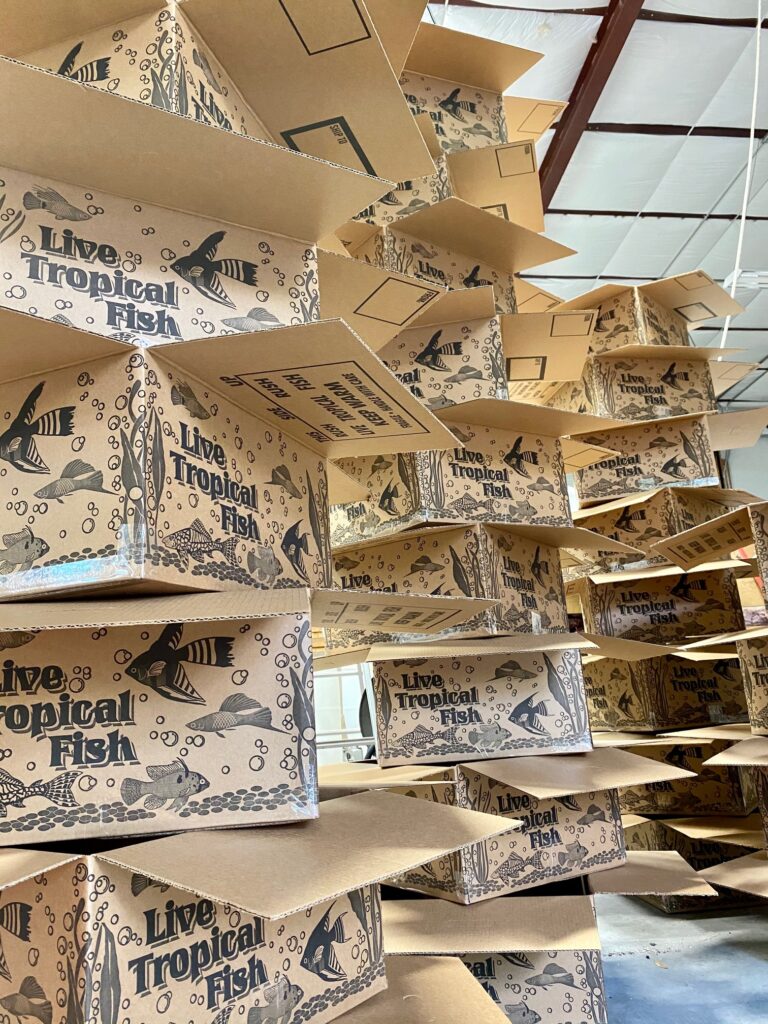
Do not be dissuaded by the pick-up process. It’s actually very simple and it’s the exact same process your local fish stores use to pick up all their livestock. The freight/cargo office is usually pretty easy to get to, as well. Ours is located outside what you would normally think of as the airport grounds. Here in Houston, TX it’s one of the very first turn-ins off the main drag that takes you to portions of the airport you are used to… parking lots, car rentals, arrivals/departures, etc. No need to deal with any of that.
Find out where it is, and plan to arrive as soon as you can, but you will want to give approximately 20-30 minutes of time for your shipment to get from the plane to the freight office after arrival.
TBS ships via Southwest Airlines and Delta Airlines. Pull up and you’ll be looking at something like this Southwest Cargo office here in Houston, TX. Walk up the stairs to the loading platform and walk inside.
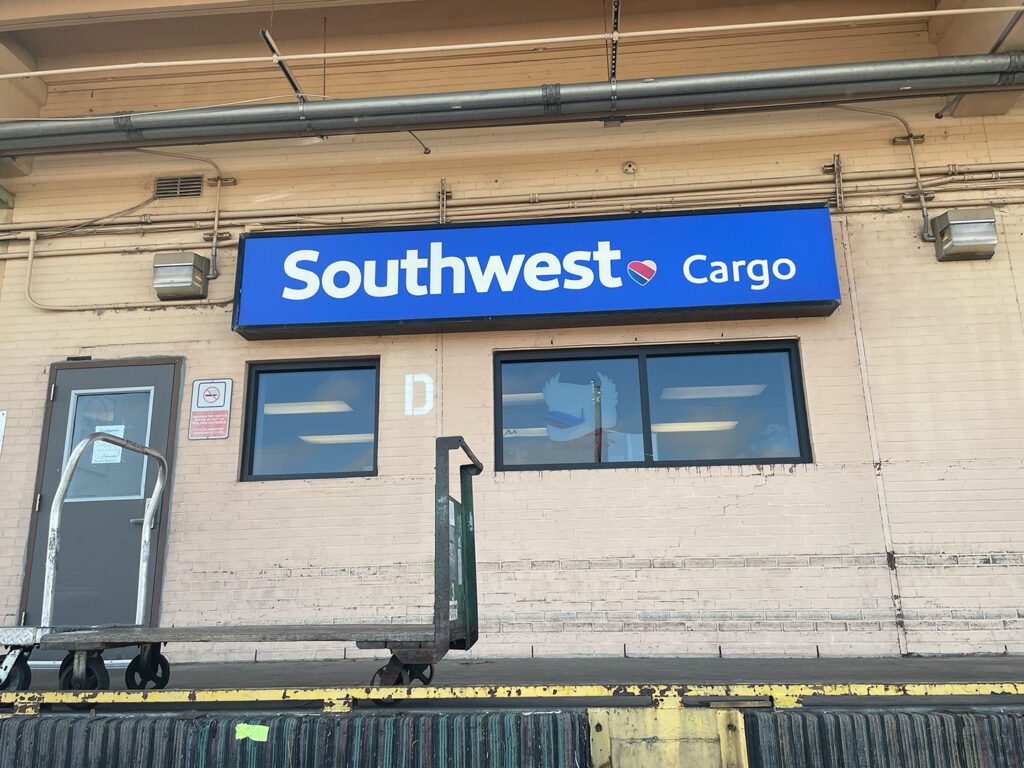
Once inside, say hello to the friendly cargo employee and give them your tracking info.
If using Southwest Airlines, the shipping charges are collected at the time of pickup, not when you order. So make sure you have a way to pay for that now. You don’t want to go home empty-handed! Delta on the other hand now requires pre-payment for shipping. If you are using Delta, you should have already been invoiced for the shipping charges.
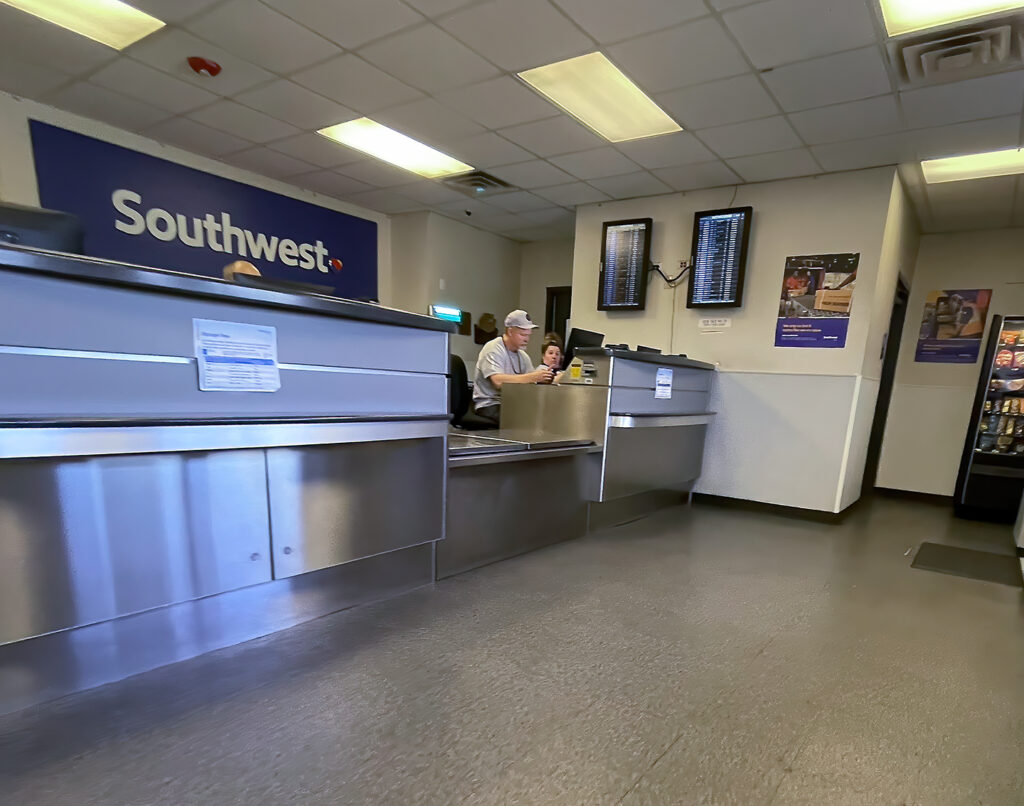
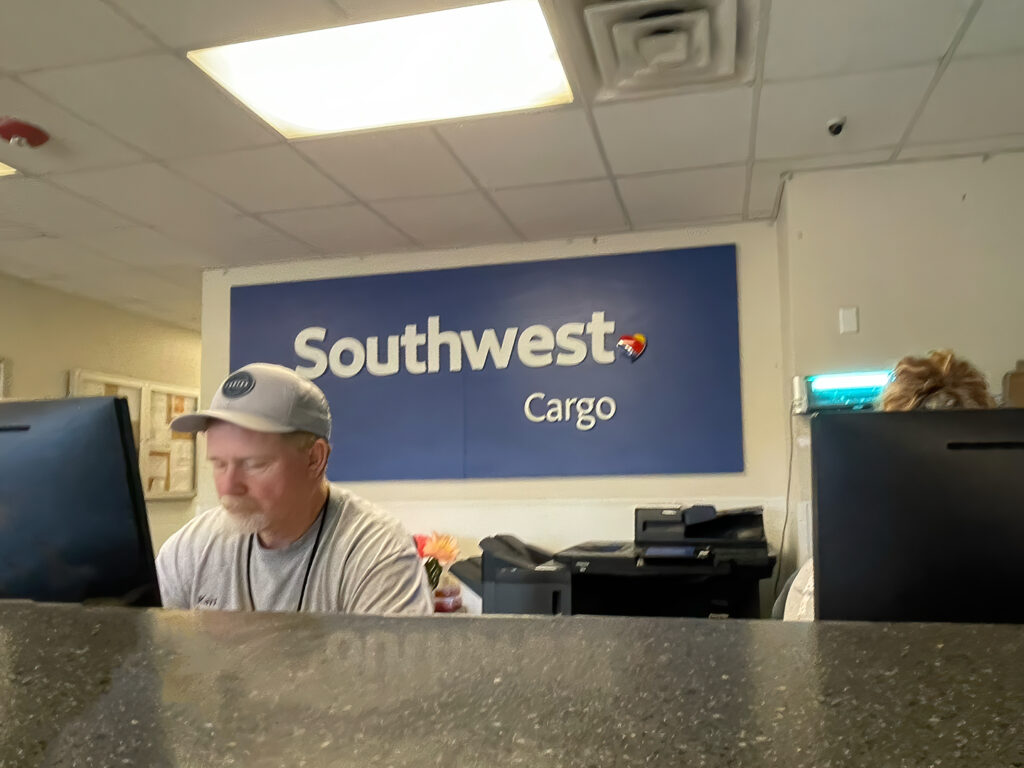
They will go get your boxes and bring them out to you so you can load them in your car. And you did it! You successfully made your first air cargo pickup. The only thing left to do now is to get it all home and into your tank!
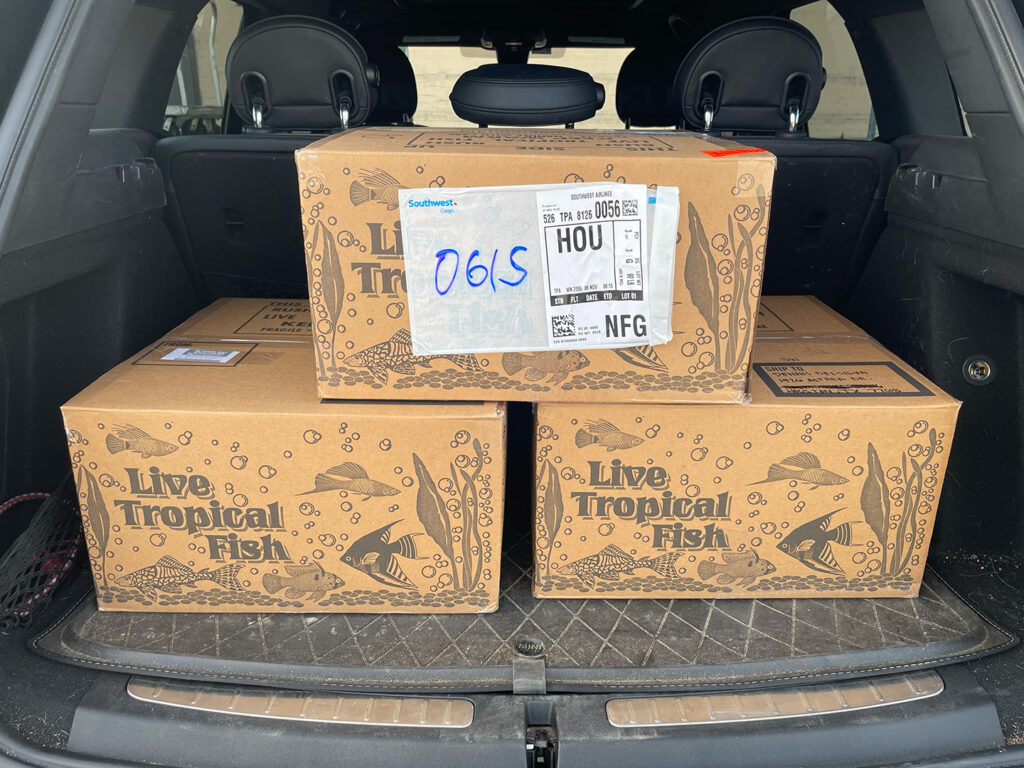
UNPACKING
Now that you are home, it’s time to unpack and get everything in the tank as quickly as you can. Here’s my process and few tips to help you out.
First, shut down your tank. No pumps of any kind should be running. No return pump, no powerheads. You will also want to drain some of the tank water to account for water displacement. Around 10% will probably do it. You can always remove more later if needed.
Next, open up the boxes and look for the sand. The sand MUST go in the tank first. Once you find it, you’ll want to do what I like to call, “The Driveway Dump”. It’s a funny name, but it’s important. While traveling, the sand has gotten shaken around pretty well. This turns the shipping water into a mucky, nasty mess. You do not want this water in your tank. So the easiest thing I’ve found is to take the bag outside (I tend to open everything in my garage) and carefully pour the water out, trying not to lose any sand in the process. You will want to keep an eye on the water as it’s flowing out and look for any hitchhikers you may want to keep. It’s common to see things like porcelain crabs, snails, micro brittle stars, etc get pulled out with the stream of water. Keep a small container of fresh saltwater on hand to toss things in and deal with later.
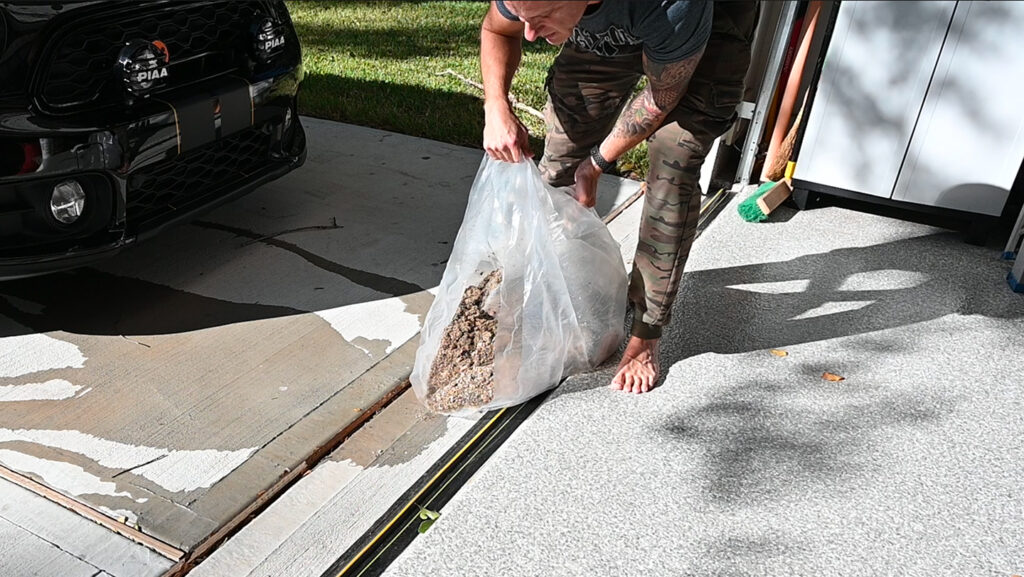
Now that most of the water is out, quickly get this back inside and put the sand into your tank. Grab a large scoop or if able, just lift it up and dump it in straight from the bag. Once it’s in, try to smooth it out a bit since the rock will be going in next. You won’t be able to see much at this point so do what you can by feel.
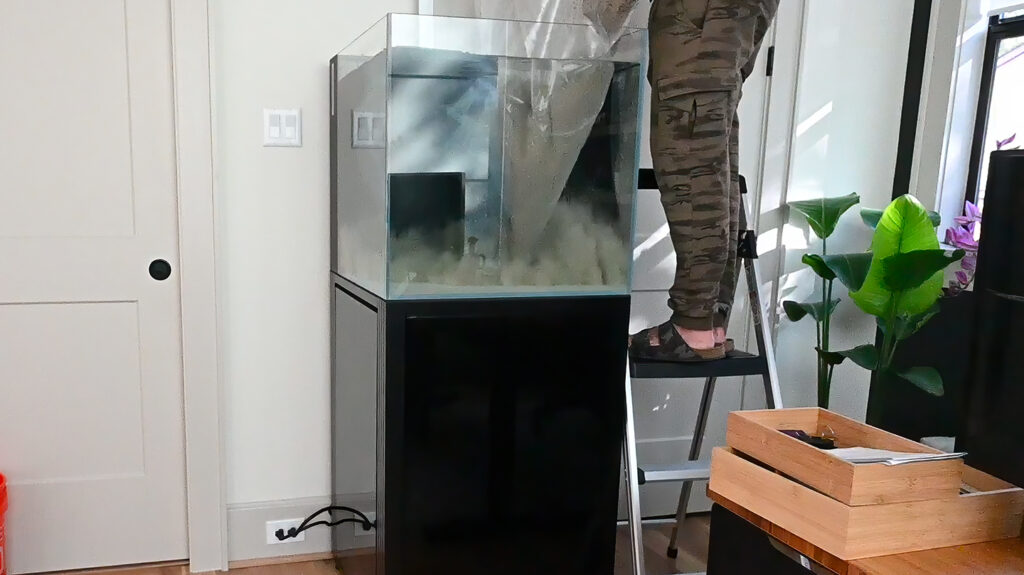
Time to unpack the rock!
Pro Tip #1: Have a bucket or two or three filled halfway with salt water. We still want to move quickly, but I like to give the rock a quick inspection before putting it in the tank, and since I’m doing this in the garage, the buckets come in handy. If you are opening your boxes inside, go ahead and inspect each piece and then immediately place it in the tank.
Pro Tip #2: Wear gloves! At this point, the rock you are about to dig into is a big mystery. You never know what is hiding inside, plus it’s not the best idea to touch all these tunicates, sponges, and other organisms with bare hands. So glove up!

Open the bags and pull your rocks out one at a time. Give each one a quick inspection for any hitchhikers that may be on the exterior, and also for any noticeable dead matter or things like pieces of sponge that may be falling off. Remove these items. You can also give it a quick smell test just to make sure nothing is really dying off. If it is you will want to figure out what and remove it. But in all the tanks I’ve started with The Package, I have never encountered this because of how well it is shipped.
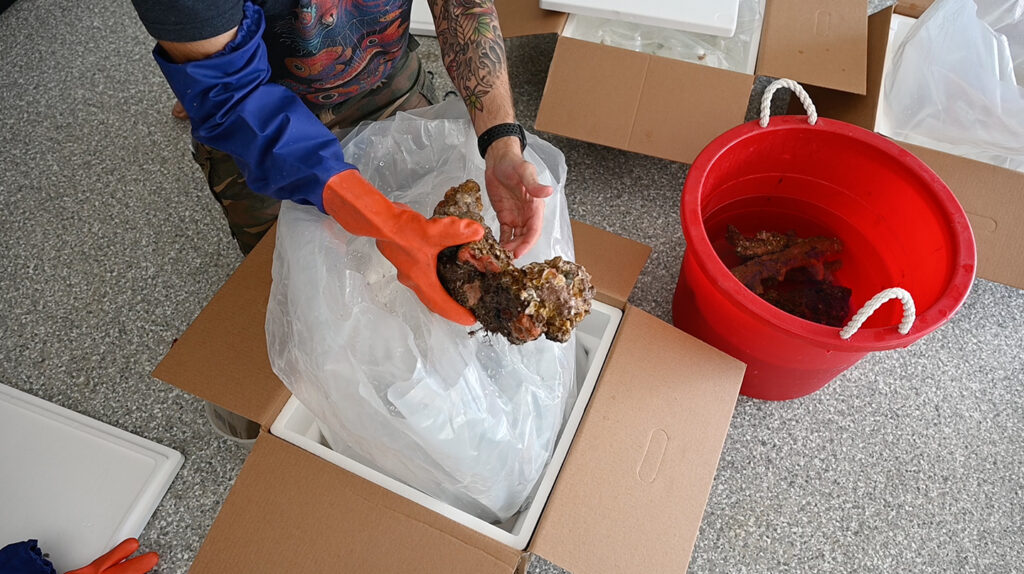
The objective here is to get the rock into the tank as quickly as possible with the least amount of exposure to air. Due to how fresh it is, and how well it’s shipped (and collected before that!) you do NOT want to cure it, dip it, etc. No aquascaping at this time. You can do that later.
You will end up with a big cloudy mess like this! That’s ok. You’ve done well. Go grab yourself a refreshment. You deserve it. You have successfully completed Part I of The Package!
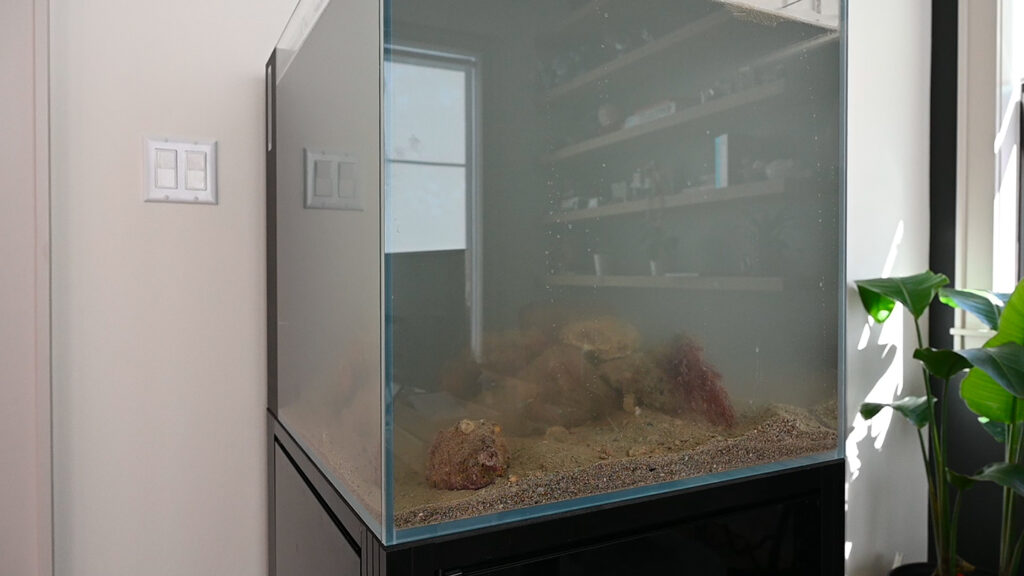
NOW WHAT?
- Let things settle
- Once the water clears up you can move some rock around, smooth out the sand, etc. Remember, you have Part II coming eventually, so you don’t want to do too much aquascaping until you have the next batch.
- TEST TEST TEST! Over the next 24-72 hours it is going to be crucial that you test for Ammonia. Test at least twice per day. First thing in the morning and then again in the afternoon, maybe right before bed as well. If you see ammonia starting to spike to dangerous levels, go ahead and do a large water change. Repeat this process as needed. For what it’s worth, I have never had to do this myself. I rarely see any ammonia levels to talk about. If you are not seeing much in the way of ammonia, go ahead and see if you are registering nitrates yet.
- When ammonia is zero and nitrates are registering, you are good to go for Part II. Contact TBS and let them know so they can get you on the schedule! Meanwhile, continue to test your nitrates at least once a day, just to make sure there isn’t any major die-off and/or nitrate spikes that would require a water change.
ARRIVAL OF PART II
The entire process of shipping and delivery of Part II of The Package is essentially the exact same as Part I. Look for the shipping email, pick up at your local cargo office, and bring it home. Easy peasy. You’ve done this twice now, making you a PRO!
This time you will be receiving the second half of your rock, and this is their PREMIUM rock. You’ll notice a lot more life on this rock compared to the base rock from Part I.
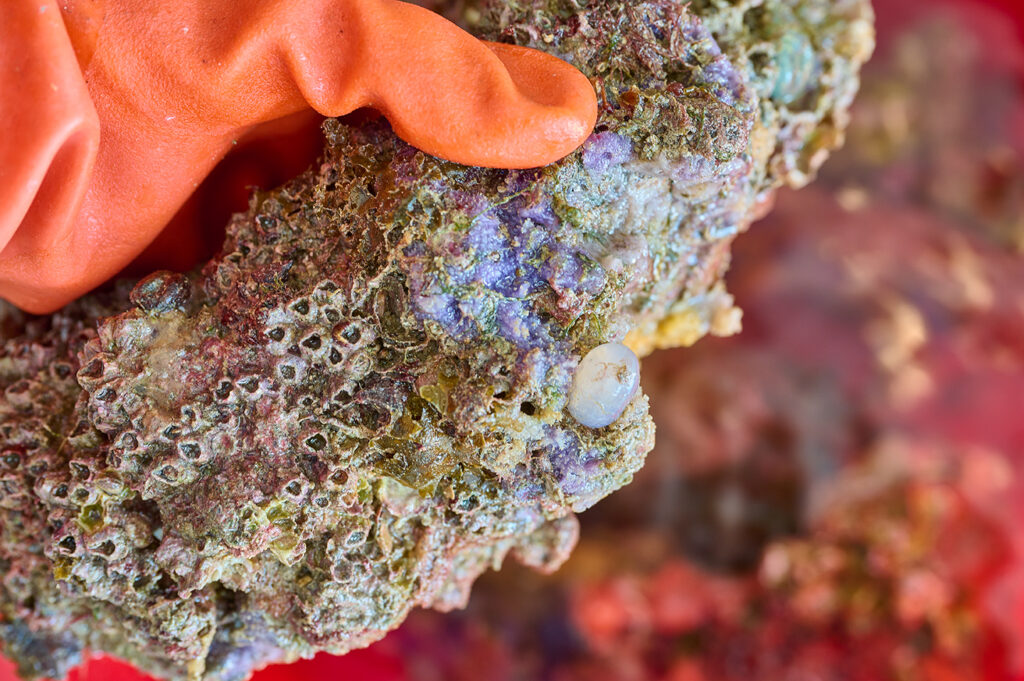
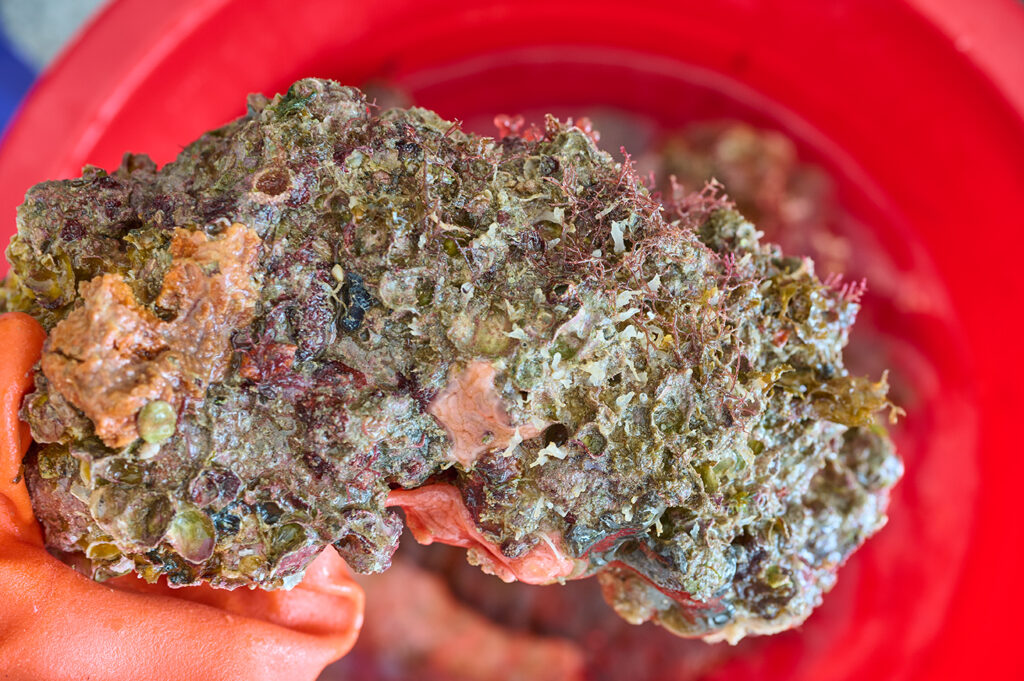
You will also receive all your clean-up crew. Snails, hermits, cucumbers, stars, and peppermint shrimp.
Follow the same process for the rock. Open the boxes and bags, give it a quick inspection, and get it into the tank. Again, do not worry about aquascaping at this time.
Once the rock is in, it’s time to handle the CUC. You will want to treat these just as you would fish. Float the bags for a good 20-30 minutes to acclimate them to the water temp. Then you will want to acclimate them to your other water parameters. I like to drip acclimate.
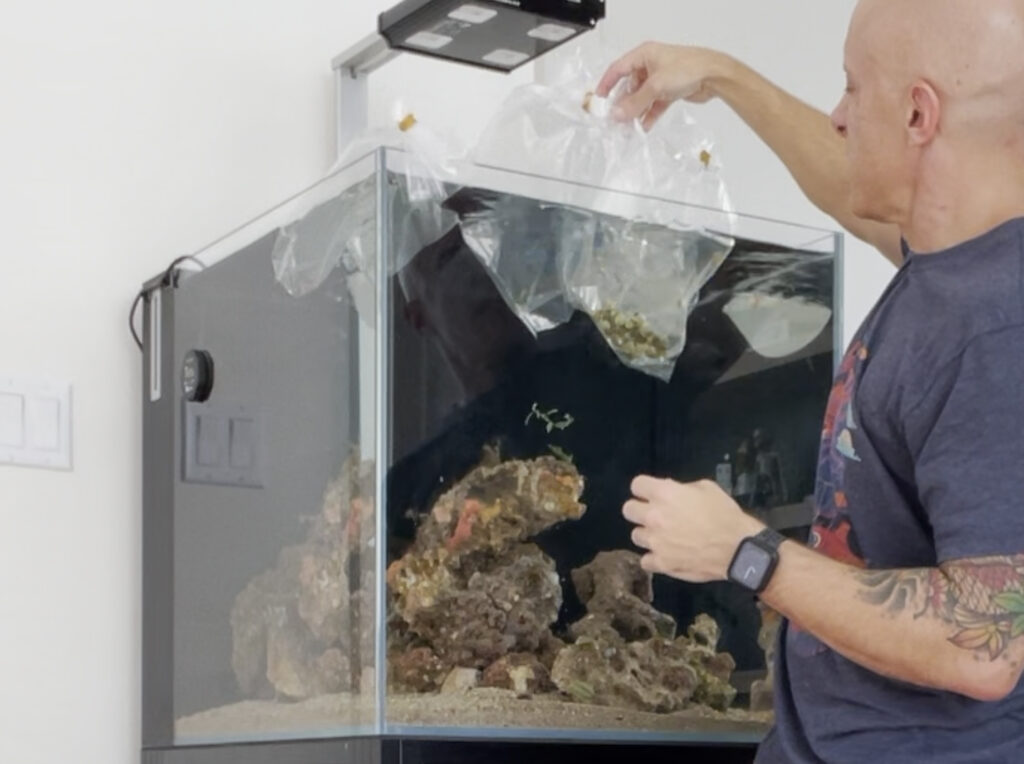
Finally, let them go into the tank and do their thing. Some things like the hermits and stars will be active immediately. Other critters like the snails and cucumbers may show little to no movement at first. This is normal. Let them be and check back later and you will probably notice that things have changed position. Eventually, everybody will be happy and moving around the tank like normal.
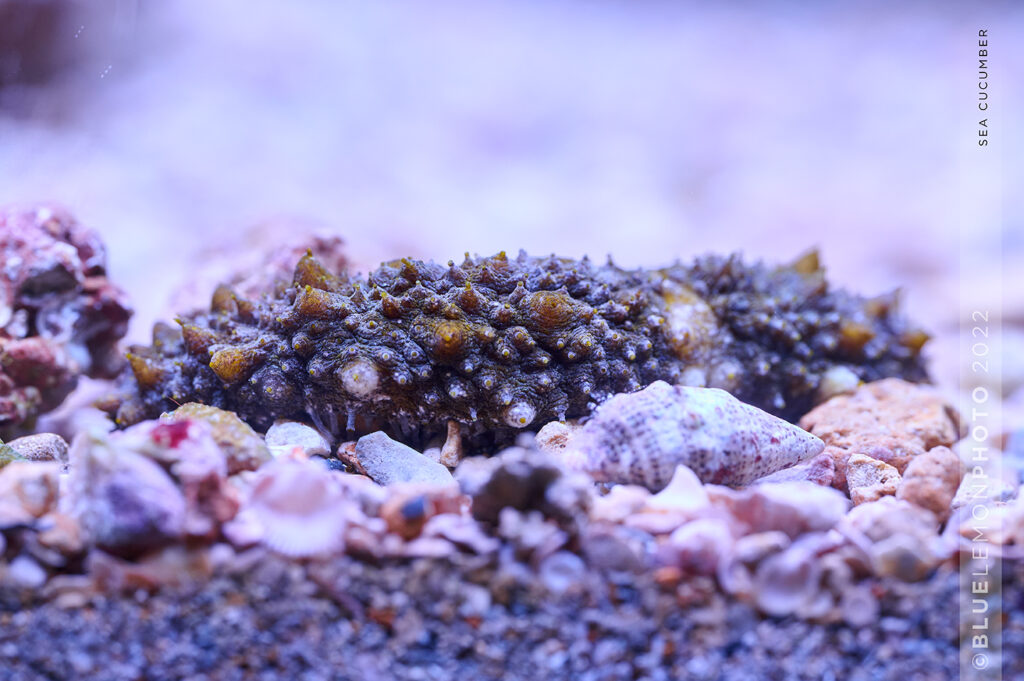
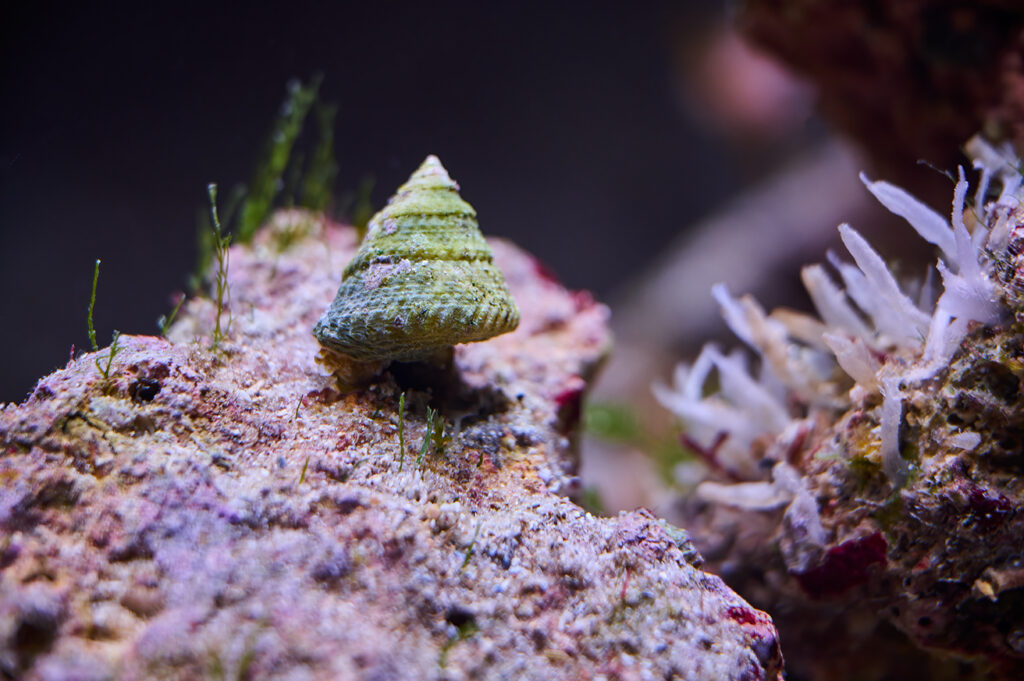
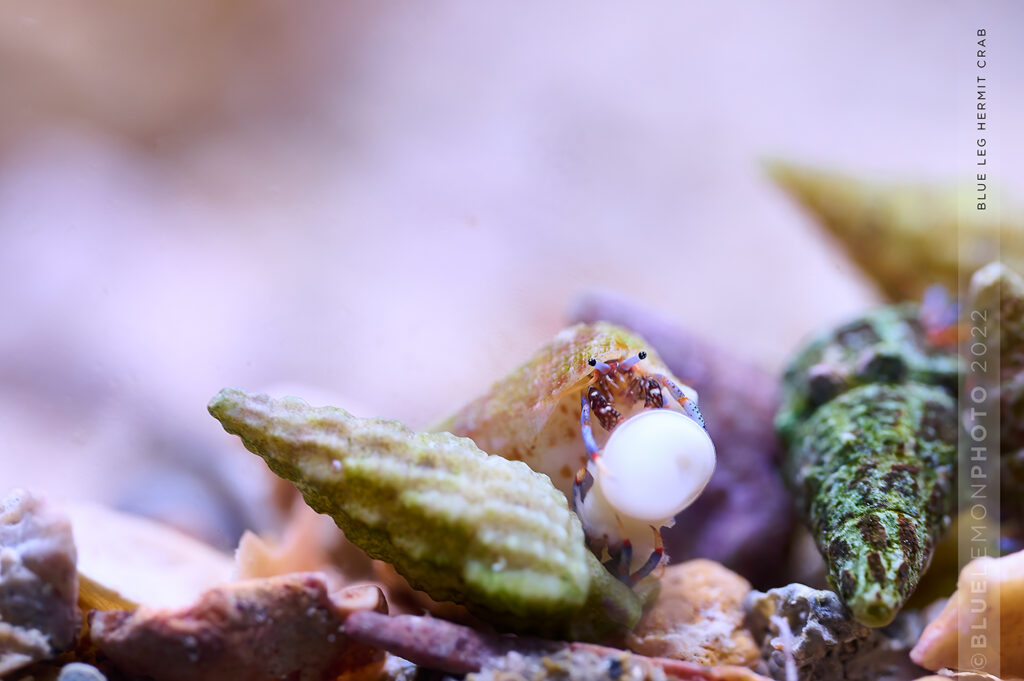
CONGRATS ON YOUR NEW REEF AQUARIUM!
That’s it! The “acquisition” portion of your TBS experience may be over, but the full TBS experience never really ends. Here’s what to expect next!
THE NEXT FEW DAYS…
You will want to continue with your testing of Nitrates. There will be some die-off. At this point, I like to stay ahead of the game and do some water changes if I start seeing Nitrates climbing above 5ppm. Your tank may be “cycled”, but it’s not mature yet. Patience is still key in this hobby even though TBS allowed us to cheat a bit. If nitrates are not getting too high, you can start testing things out with a hardy fish and coral or two. Don’t go crazy yet.
This is also the time to work on your aquascape. Start playing around with rock arrangements. It is challenging to do this underwater. I like to find pieces that sort of fit together, allowing for a fairly sturdy structure on its own. But you CAN use a reef epoxy underwater to help secure things. I just try to use it as little as possible. My skimmer tends to go a bit nuts for a while when using it.
I find this one from Two Little Fishies works better than some of the others. And I like to sandwich it between a couple of dabs of crazy glue.
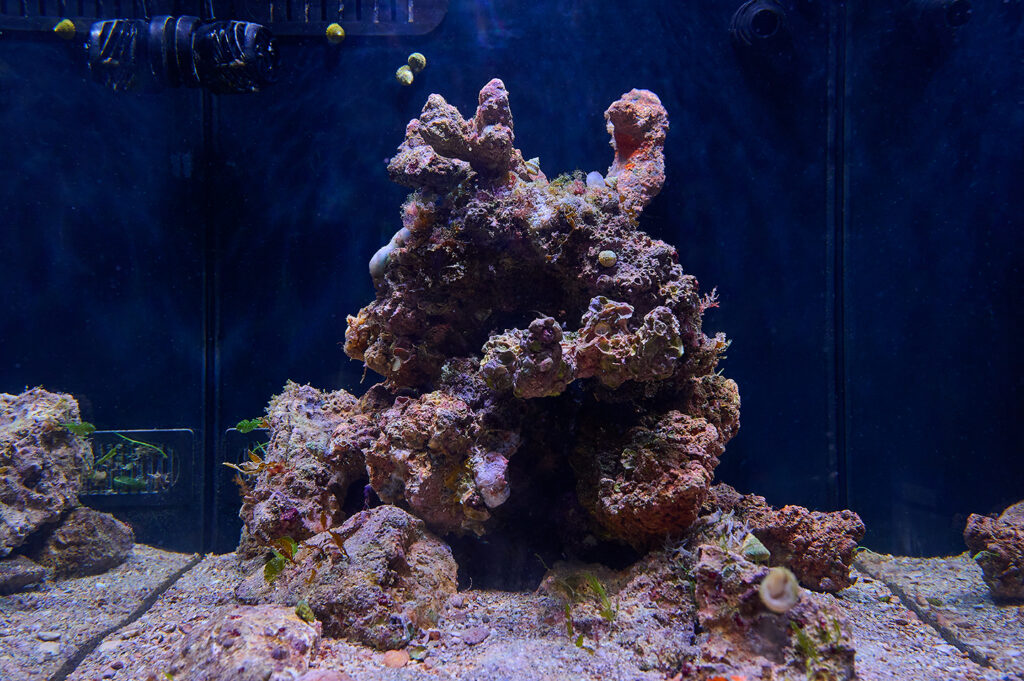
THE NEXT FEW WEEKS…
Enjoy everything that people who start their tanks with dry rock are missing out on! There always seems to be something fun to look at and discover during those early days of a TBS setup. Sponges, tunicates, macroalgae, feather dusters, crabs, stars, etc.
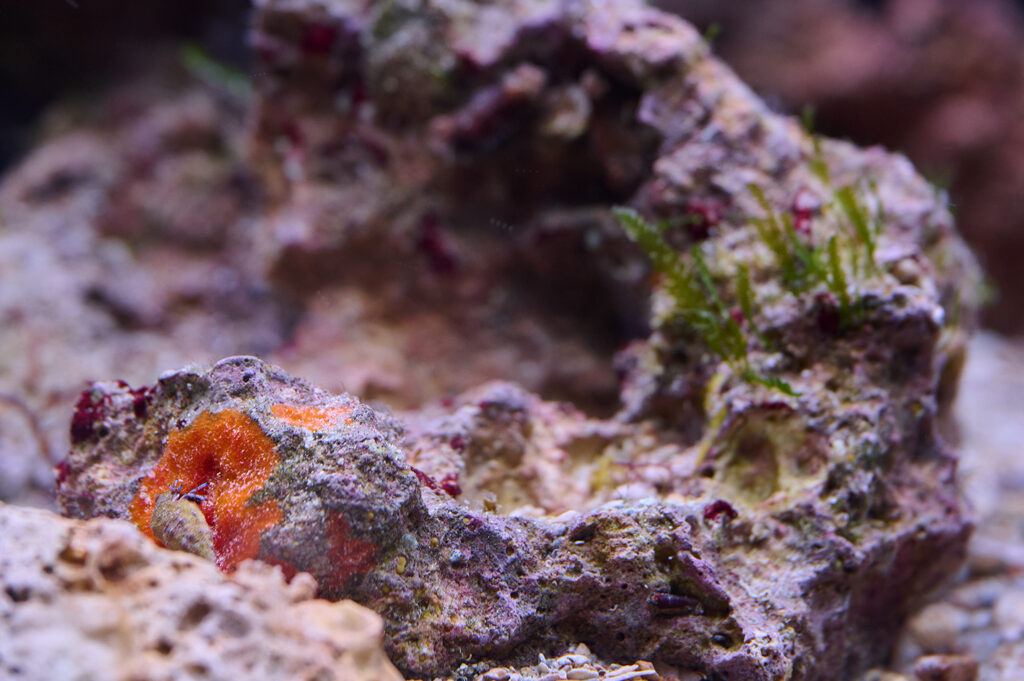
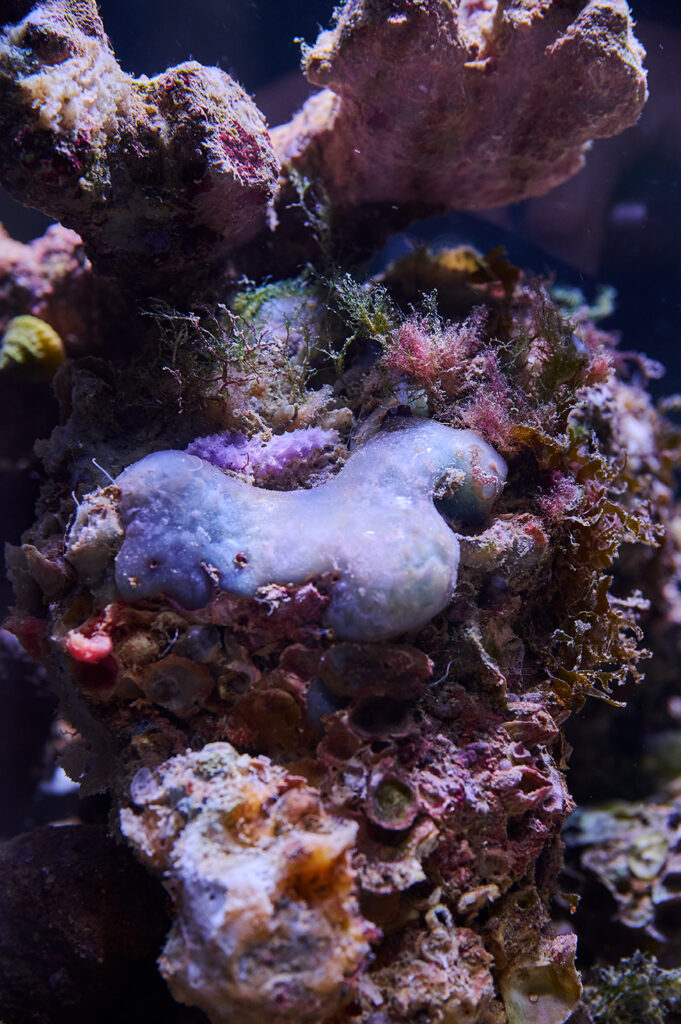
Continue to keep an eye on nitrates. Things are still settling in and you could still have some die-off. Full disclosure… much of what you see on the rock when you first unpack it and put it in the tank, will die off over time. It’s extremely hard to care for so much life in the closed environment of a small aquarium. My advice is to enjoy it while you can. As these wonderful textures and colors decrease over the coming months, you’ll be replacing them with beautiful fish and corals.
THE NEXT FEW MONTHS AND BEYOND…
By choosing to start your tank with Tampa Bay Saltwater, you’ve given your tank a kickstart not only in the initial cycle but in overall health and stability! You should expect a pretty smooth start to the hobby and continued success in the long term.
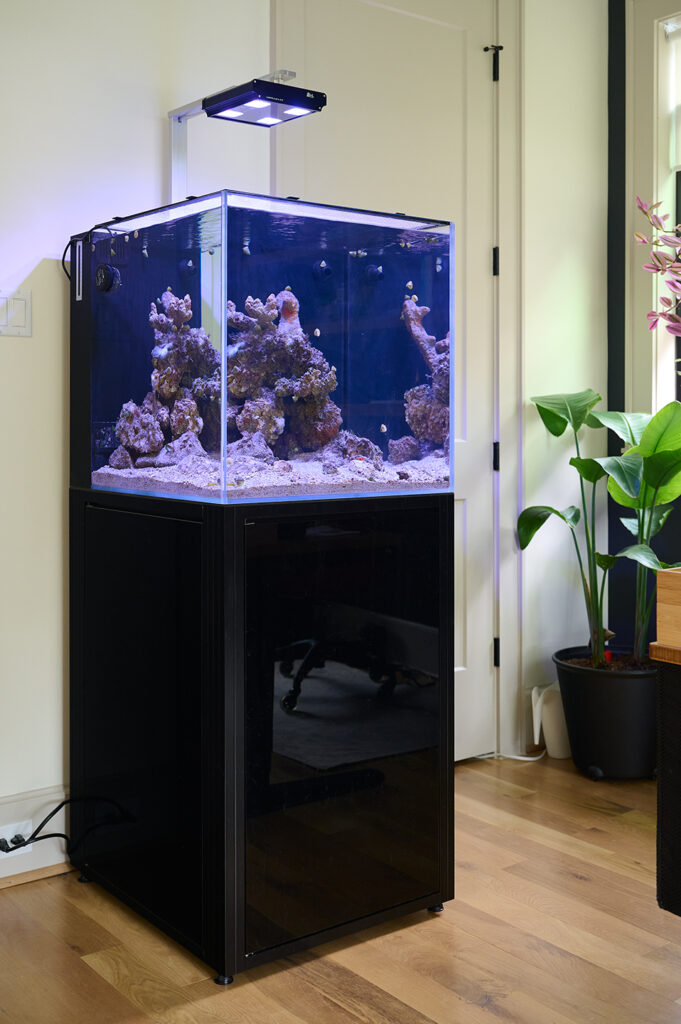
HITCHHIKERS: GOOD & BAD
Fellow hobbyists always want to know… “but what about the bad hitchhikers!???”
The short answer is… Yes, there is always a chance some undesirable critters may sneak in along with all the good stuff. Common examples with TBS rock would be gorilla crabs, mantis shrimp, whelks… but none of these are more than a minor nuisance and easy enough to remove over time as you see them. It’s been my experience that they all get a much worse “rap” than they deserve, so there is never any need to panic. And they are just as interesting to find and watch as everything else. Something like these 24″ long stainless steel tweezers or these 24″ long stainless steel forceps come in really handy. The forceps (and some patience) are my go-to tool for removing a mantis shrimp!
With my most current order, which is also my first order with the new ownership, I noticed an almost complete absence of any of these creatures. I inquired about it and was informed that TBS now takes measures at several points, from collection off the sea floor to shipping, picking them off as they see them.
Regardless, it has always been my experience that the benefits of TBS rock and sand farrrr outweigh the occasional minor inconvenience of having to remove a little unwanted crab or snail.
In all my shipments, I have NEVER ended up with any kind of nuisance algae, aiptasia, isopods, or anything of the sort.
In speaking with TBS recently, I was informed of the following, which is great news:
AquaBiomics DNA testing revealed 0 of the 13 parasites they test for are in the TBS holding system. This is in part due to not purchasing fish from wholesalers. 99% of our products come from the lease site. Some clean up crew comes from divers in the Keys, and peppermints are aquacultred by ORA. Another interesting thing is the lease site water temps range from 45 °F to 90 °F. This probably hinders many of the parasites. Also, there are no Chromis in our northern waters that spread uronema. So folks don’t have to worry about getting ich, velvet or brook from our products.
-TBS Crew
CONCLUSION
I know this was a long read. If you’ve stuck with me and made it through this entire article, I hope this gives you a really good idea of what to expect when ordering The Package from Tampa Bay Saltwater. And if you do choose to embark on this little adventure, I truly hope you enjoy it as much as I do. Every. Single. Time.
____________________________
I sometimes link directly to products and services that I REALLY like and think you may enjoy or find useful as well. If you buy them, I may get a small share of the revenue from the sale from our partners.




